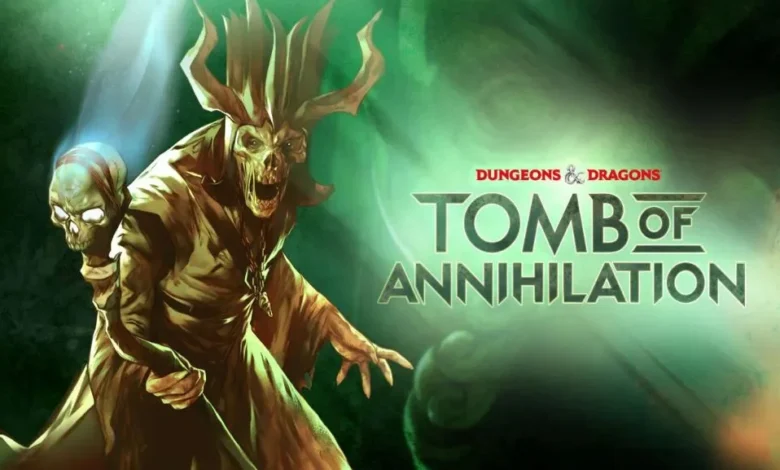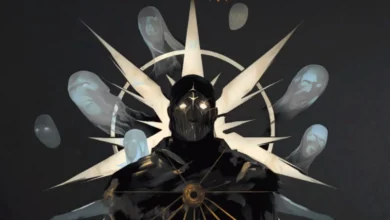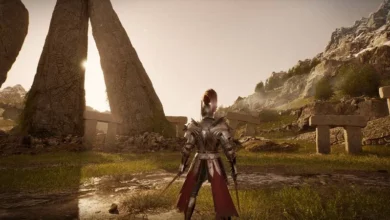Tomb of Annihilation Disclaimer: What It Means & Why It Matters

Understanding the Disclaimer
Tomb of Annihilation Disclaimer: If you’ve glanced through “Tomb of Annihilation” (ToA), you’ll notice it kicks off with an eyebrow-raising line:
“Disclaimer: This adventure will make your players hate you—the kind of simmering hatred that eats away at their souls until all that remains are dark little spheres of annihilation where their hearts used to be.”
That’s not your typical legal boilerplate. It’s a thematic warning, meant to prepare Dungeon Masters (DMs) and players alike for the tone of the module: relentless, high-stakes, and often brutally unforgiving.
In essence, the disclaimer signals: this adventure will push limits. If players are used to gentler campaigns, ToA might feel very different. The key here is to interpret it not as a guarantee of player death (though that’s likely), but as a promise of challenge and tone.
Why Include a Disclaimer Like This?
Setting player expectations
By adding such a bold disclaimer, the creators at Wizards of the Coast are managing expectations. They warn you the adventure isn’t just “casual fun” — it will test you. The Fandom wiki and other sources show this line serves as both warning and a touch of dark humor.
Marketing and tone-setting
The disclaimer also helps position ToA among D&D adventures: it distinguishes it from low-risk modules by signaling high-severity content. As one review put it: “[Tomb of Annihilation] is … the type of campaign that can bring out the best—or worst—in a dungeon master.”
Guarding against DM or player surprises
Since ToA involves harsh mechanics (like the Death Curse) and deadly wilderness exploration, warning players ahead of time helps avoid forging resentment due to “unexpected” mechanics. Some DM blogs note the disclaimer helps align table mindset.
Key Mechanics Reflected by the Disclaimer
The Death Curse
One of the core narrative drivers in ToA is the Death Curse: formerly resurrected characters are wasting away, and the usual resurrection magic fails. This elevates risk significantly.
High lethality & sandbox danger
ToA is deliberately designed with high-stakes exploration: toxic jungles, deadly monsters, ancient traps. Some reviewers label it more “meat-grinder” than casual adventure. The “will make your players hate you” line alludes to this
Time pressure & mounting threat
The module often imposes timers (the curse, the artifact threat) and difficult terrain, meaning choices matter and slack can cost very heavily. The disclaimer’s tone reflects that persistent looming threat.
Implications for Dungeon Masters
Know your group
If your players prefer relaxed, narrative-light games, ToA as written may be rough. The disclaimer signals you should check in with the group first. Consider modifying difficulty, adding safety nets, or offering options for “casual mode”.
Adjust mechanics if needed
Many DMs recommend tweaking brute challenge aspects (e.g., lowering encounter lethality, giving more resources, softening travel hazards) so that the mood stays fun rather than punishing. The disclaimer encourages you to be aware of the tone.
Session 0 is essential
Use Session 0 to communicate what this game will bring: high tension, risk of character death, exploration of dangerous environments. Make sure players are willing and prepared. The disclaimer helps frame this conversation.
Use the disclaimer as table-setting
You might read the actual text to your players before starting, to set the mood. Use it to highlight that this is not your standard stroll through the woods. It’s a jungle-lit nightmare with horrors waiting.
How Players Should Respond to the Disclaimer
Be cautious and prepared
This adventure rewards smart play: scouting, planning, avoiding obvious traps. Characters will be challenged in both combat and traversal. The tone of the disclaimer suggests you won’t be winning by brute force alone.
Understand the stakes
When death magic stops working, consequences are permanent in a way that many players aren’t used to. Prepare for tense sessions, and make decisions reflect that weight.
Use it as motivation, not discouragement
Yes: the module can frustrate players. But if communicated properly, the “players hate you” line becomes a badge of honor: “We made it through ToA.” Embrace it.
Align with the DM
Since the DM may choose to run “meat-grinder mode” or a more forgiving version, players should know which path they’re on. The disclaimer reminds players that insider knowledge of total rules may still miss the tone.
Final Thoughts: The Power of the Disclaimer
The simple, bold line in Tomb of Annihilation acts as much more than a quirky joke—it’s a strategic tool. It communicates tone, warns of danger, and sets a shared understanding between DM and players: this will be a challenge.
If used well, the disclaimer becomes a unifying statement: you’re signing up for something serious, something dangerous, maybe even something scary. It helps ensure the campfire + dice group isn’t surprised by the deadlier fare.
In short: when you read that disclaimer, you should hear “brace yourselves”. It doesn’t mean doom is inevitable—but it means doom is possible, even probable. That’s exactly the mood the adventure creators wanted to instill.




